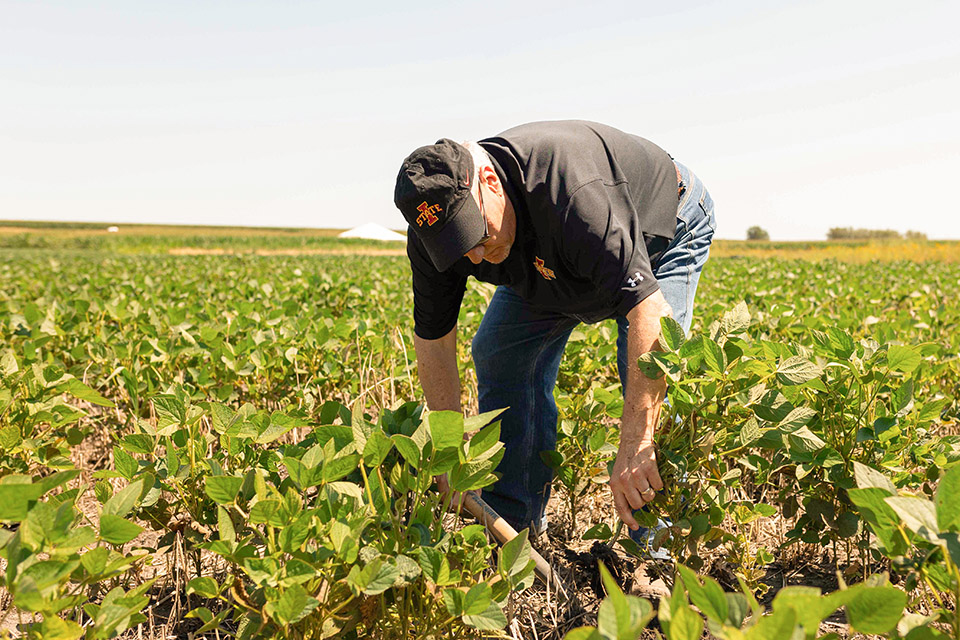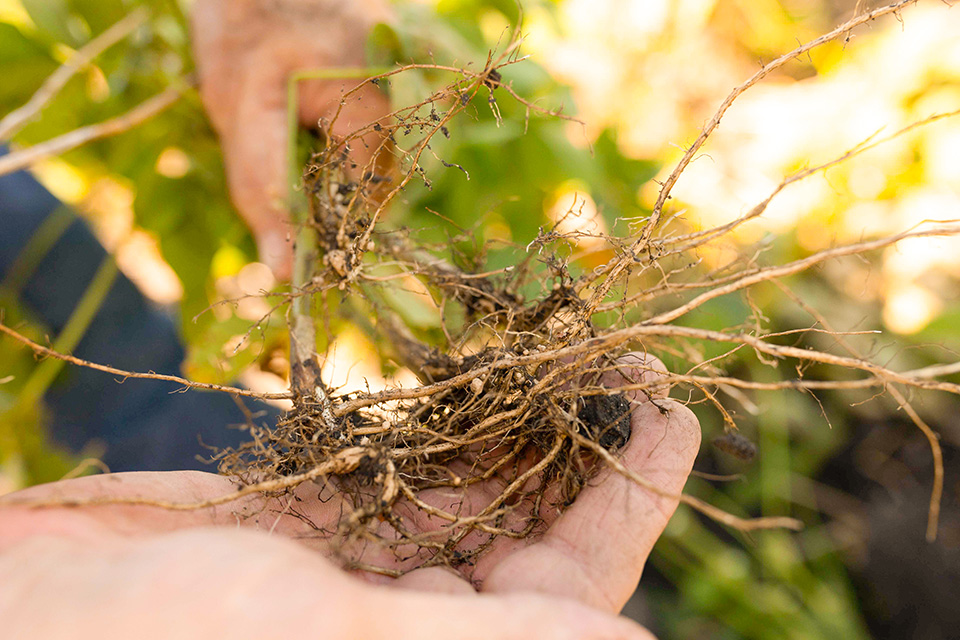
(Photo: Iowa Soybean Association / Joclyn Bushman)
The battle against Soybean Cyst Nematode could be a “SNAP”
November 16, 2023 | Kriss Nelson
With an estimated cost of $1.5 billion yearly in yield loss, Soybean Cyst Nematode (SCN) is undoubtedly the most damaging pest affecting soybeans in the United States.
“Soybean cyst nematode is like the Energizer bunny. It just keeps going and going,” says Greg Tylka, Morrill professor and director of the Iowa Soybean Research Center at Iowa State University.
Managing the pest should be a “SNAP,” Tylka says. He encourages farmers to follow this acronym while making management decisions for 2024.
Start using varieties with Peking resistance. Seed companies have more than doubled the number of Peking-resistant varieties from 40 a year ago to more than 80.
Never grow Peking-resistant varieties in two consecutive years. Tylka says there is concern that Peking-resistant varieties will lose their effectiveness much quicker than the PI 88788 variety did.
Always grow PI 88788 resistance after growing Peking resistant varieties.
Plant corn in the years between growing Peking and PI 88788 SCN-resistant varieties.
Research data—including work funded by the North Central Soybean Research Program—shows that Peking resistance does not maintain its durability when raised in consecutive years.

“The sustainable approach is to alternate growing resistant varieties with the two sources of resistance,” says Tylka. “It took 30 years for PI 88788 to wear out, but it won’t take Peking that long. It is anticipated that it will take 10 years if we are lucky when used continuously. But we may get through for two or more decades of profitable soybean production in SCN-infested fields by rotating between the two sources of SCN resistance genetics.”
Early 2023 field research yield results show a yield advantage when using Peking varieties versus PI 88788, which concerns Tylka.
“Peking is the source of SCN resistance in most top-yielding varieties in our trials, and with a 20 bushel per acre in favor of variety with Peking resistance, farmers could be tempted to grow it all of the time,” he says.
However, that likely will be detrimental, so farmers should remember the SNAP management recommendation.
“It is a must that farmers rotate from Peking to PI88788 resistance, or we will be going back to the days where we are struggling to achieve 50 bushels-to-the-acre soybeans,” says Tylka. “We could slip back in a matter of five or six soybean crops if we abuse Peking resistance.”
Tylka advises producers to look into using seed treatments – either chemical or biological – as a weapon against SCN.
“I encourage farmers to experiment with these treatments on their fields as research shows variable results from field to field,” he says.
Profit Checker
Just how much is SCN costing you? A new tool, powered in part by the soybean checkoff, will help determine the impact of SCN on your farm.
With funding from the United Soybean Board, the SCN Coalition has created the SCN Profit Checker. Powered by data funded in large part by the Iowa Soybean Association and collected from more than 35,000 university research plots, the SCN Profit Checker helps farmers and agronomists consider four factors that affect yield: starting egg count, soil pH, sand content of the soil and the SCN female index on PI 88788 resistance.
Back